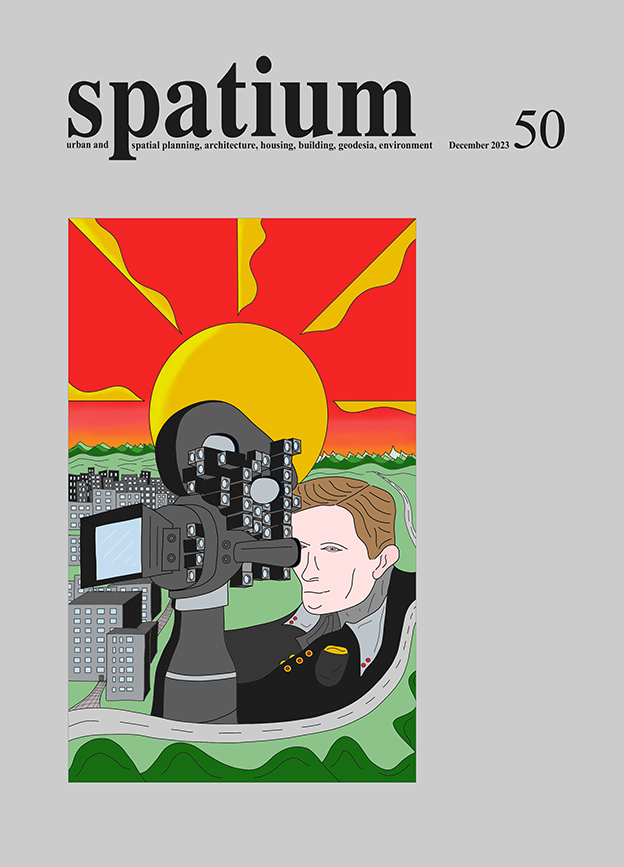The impact of energy improvement measures in single-family residential buildings on air pollution in the city of Užice
DOI:
https://doi.org/10.2298/SPAT220925009VKeywords:
air pollution, single-family household, thermal envelope, individual heating systemAbstract
The majority of existing architecture in Serbia has poor thermal characteristics, and heating systems are mostly based on polluting energy sources. This problem results in the unsatisfactory ecological image of cities, and it is endangering the health of the population. Therefore, improving energy performance is becoming an increasingly common principle of design, within both new and existing buildings. The starting point of this paper is that the use of more than sixteen thousand individual heating systems within single-family households in Užice is one of the most influential air pollutants in the city. The poor quality of energy sources and improper combustion processes release toxic substances into the atmosphere, but the cause of increased emissions of pollutants can be identified in the poor characteristics of thermal envelopes. This research explores whether there is a solution that reduces the pollution in single-family houses by changing the thermal envelope and heating system. The first part of the study points out the main characteristics of the Užice agglomeration, air pollution and energy sources, while the second part describes the selected single-family housing location in the city. The final part of the research examines the impact of various energy improvement measures on the air pollution in the city of Užice.
References
Jovanović Popović, M., Ignjatović, D., Radivojević A., Rajčić, A., Đukanović Lj., Ćuković Ignjatović, N., Nedić, M. (2012a). Nacionalna tipologija stambenih zgrada Srbije (in Serbian). Beograd: Arhitektonski fakultet Univerziteta u Beogradu i GIZ - Deutsche Gesellschaft fur internationale Zusammenarbeit.
Jovanović Popović, M., Ignjatović, D., Radivojević A., Rajčić, A., Đukanović Lj., Ćuković Ignjatović, N., Nedić, M. (2012b). Atlas porodičnih kuća Srbije (in Serbian). Beograd: Arhitektonski fakultet Univerziteta u Beogradu i GIZ - Deutsche Gesellschaft fur internationale Zusammenarbeit.
Jovović, A. (2021). Srbija i životna sredina: Grejna sezona je okidač za povećanje nivoa zagađenosti vazduha. BBC (in Serbian) [online]. https://www.bbc.com/serbian/lat/srbija-59299321 [Accessed: 20 Jan 2022].
Knežević J., Jović B., Marić-Tanasković L., Mitrović-Josipović M., Ljubičić A., Stamenković D., Dimić B. (2021). Godišnji izveštaj o stanju kvaliteta vazduha u Republici Srbiji za 2020. Godinu (in Serbian). Beograd: Ministarstvo zaštite životne sredine, Agencija za zaštitu životne sredine.
Milivojević, D. (2014). Između iskoraka i pomirenja. Arhitektura Stanka Mandića (in Serbian). Užice: Visoka škola strukvonih studija Užice.
Model 5. (2021) Studija parkiranja u gradu Užice. Model 5 [online]. https://model5.rs/studija-parkiranja-u-gradu-uzice/ [Accessed: 20 Jan 2022].
Službeni glasnik grada Užica (br. 8/2019). Izveštaj o stanju životne sredine u gradu Užicu za 2018. godinu (in Serbian).
Službeni glasnik grada Užica (2010). Prostorni plan grada Užica (in Serbian).
Službeni glasnik RS (br. 31/11). Pravilnik o energetskoj efikasnosti zgrada (in Serbian).
MEEMP - Projekat energetske efikasnosti i upravljanja energijom u opštinama (2022). Program prostornog snabdevanja toplotom za period od 2022‒2030. godine za Grad Užice (in Serbian) [online]. https://uzice.rs/wp-content/uploads/2022/12/PPST-UZICE.pdf [Accessed: 12 Oct 2022]
Republički hidrometeorološki zavod (2020). Meteorološki godišnjak (in Serbian), Beograd: Republički hidrometeorološki zavod.
Šumarac D., Todorović M., Đurović-Petrović M., Trišović N. (2010). Energy Efficiency of Residential Buildings in Serbia, Thermal Science, Vol. 14, pp. 97-113.
Vallero D. (2014). Fundamentals of Air Pollution. New York: Academic Press.


